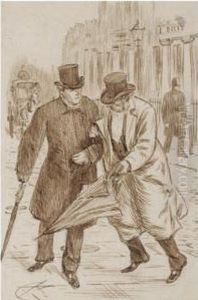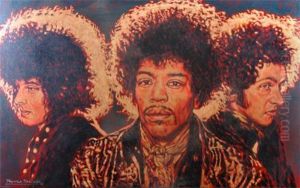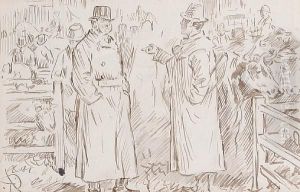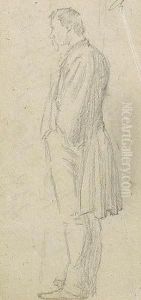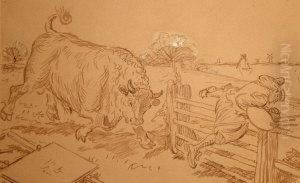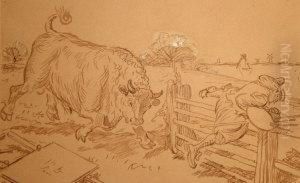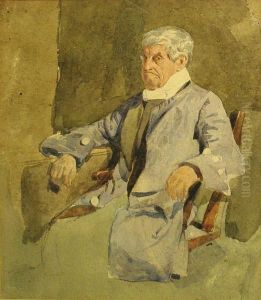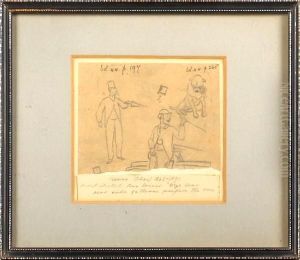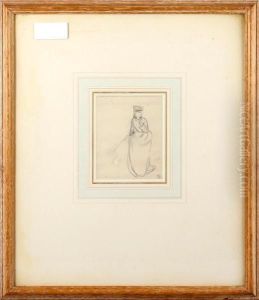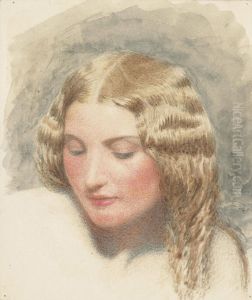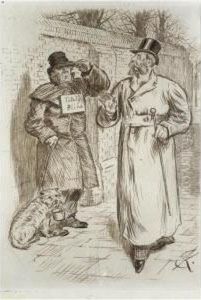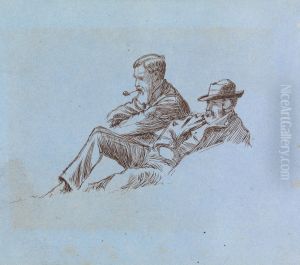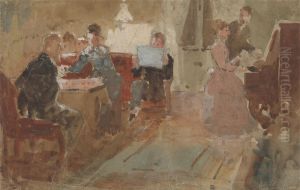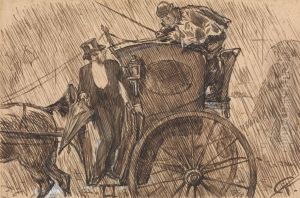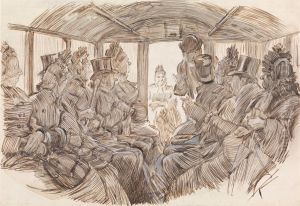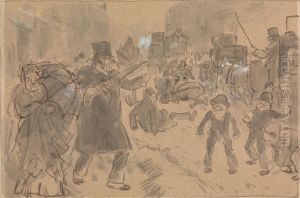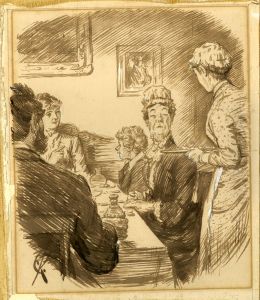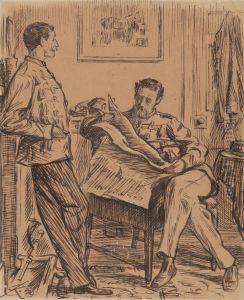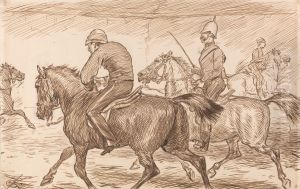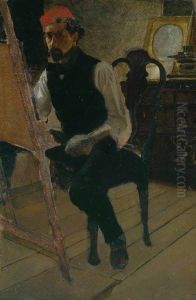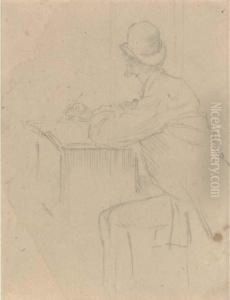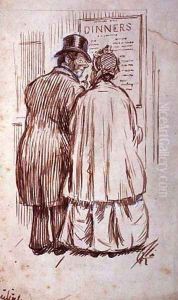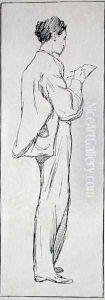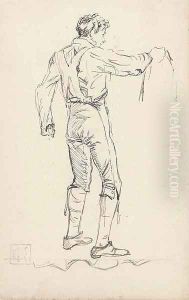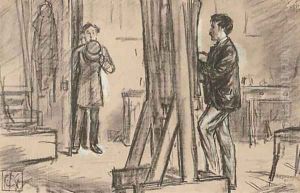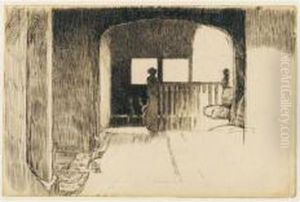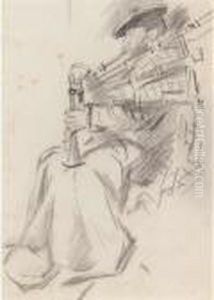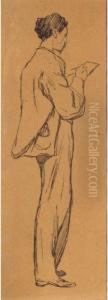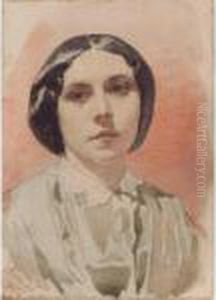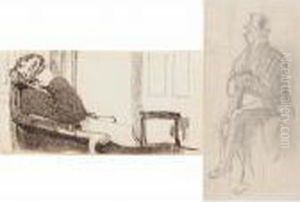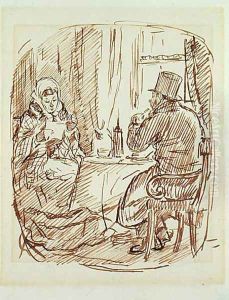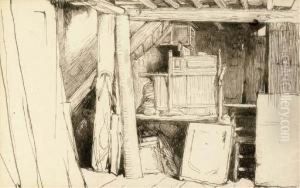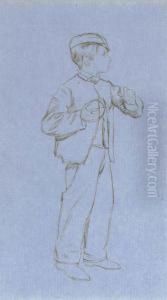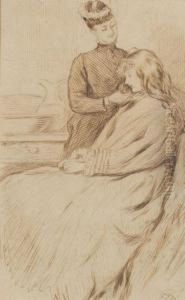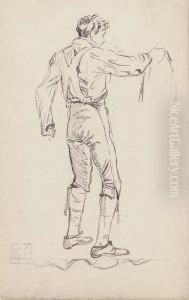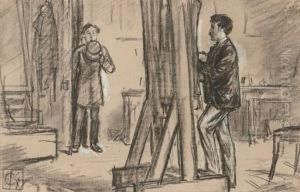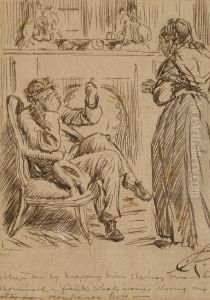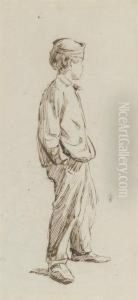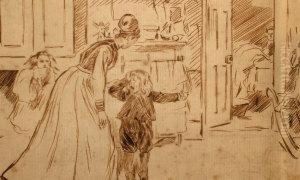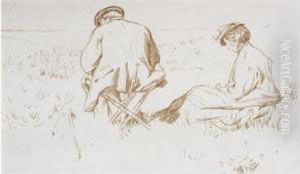Charles Keene Paintings
Charles Samuel Keene was an English artist and illustrator, born on August 10, 1823, in Hornsey, London. He is best known for his work with the satirical magazine 'Punch,' where he contributed for over three decades. Keene's work was highly regarded for its keen observation of Victorian life and its subtle humor.
Keene was apprenticed to an engraver after finishing his schooling, which provided him with the technical skills that would later contribute to his distinctive etching style. Despite his initial training in engraving, Keene's passion lay in drawing and sketching. His early works were submitted to various publications, leading to his association with 'Punch' in 1851.
At 'Punch,' Keene began by providing initial sketches that others would engrave, but as his reputation grew, his work was given greater prominence. Unlike many of his contemporaries, Keene avoided political satire, focusing instead on everyday life and character studies. His drawings often featured the lower and middle classes, showcasing the quirks and foibles of Victorian society with a sympathetic and often affectionate eye.
Although he was not a social reformer, Keene's art sometimes subtly highlighted social issues of the time. His work was characterized by its fine detail, expressive characters, and a mastery of shading and line work. Keene's illustrations were also notable for their absence of captions, a departure from the norm in 'Punch,' which allowed the images themselves to convey the full narrative.
Charles Keene never married and led a relatively secluded life, with few known personal relationships outside of his professional ones. He was considered somewhat eccentric, with a lifestyle that was simple and frugal. Keene's dedication to his craft was apparent; he was prolific and his work ethic was well known among his peers.
Keene's health began to decline in the late 1880s, and he eventually succumbed to pneumonia on January 4, 1891. His legacy continued after his death, as his illustrations remained influential for future generations of artists. Keene is remembered not only for his contributions to 'Punch' but also for his role in shaping the landscape of English illustration during the 19th century.

